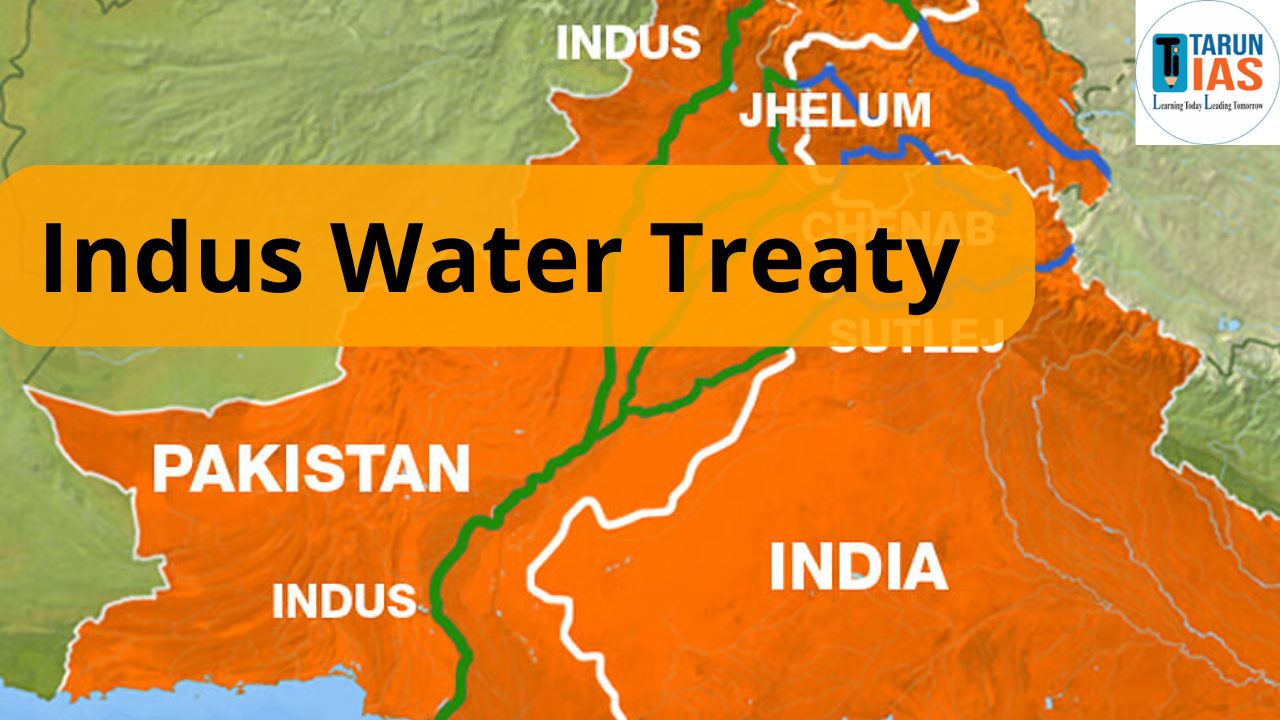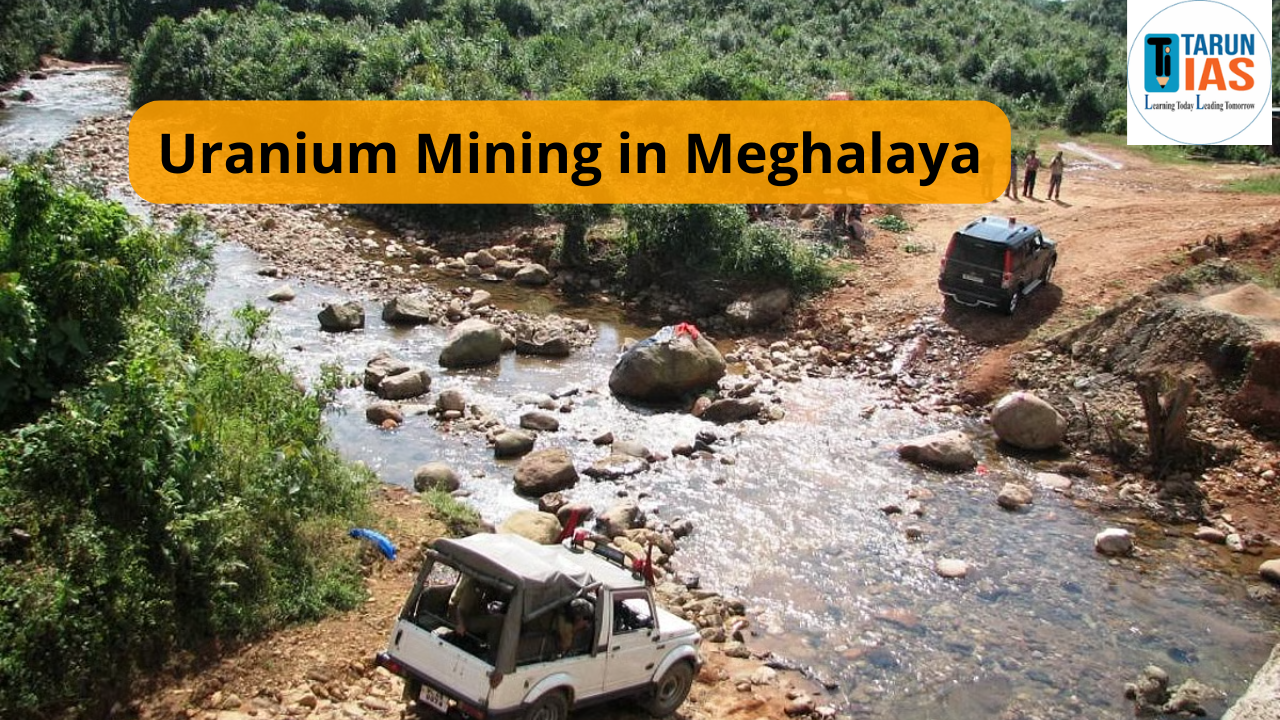Introduction
- The Indus Water Treaty, negotiated in 1960 between India and Pakistan, stands as a landmark transboundary water-sharing agreement. However, both countries have faced ongoing disagreements over its implementation.
- Last year, India called for amendments to the treaty, expressing dissatisfaction with the dispute resolution process and citing Pakistan’s continued ‘intransigence’ in adhering to the treaty’s terms.
- Conversely, Pakistan has raised concerns about India’s construction of the Kishenganga and Ratle hydroelectric projects, claiming these projects violate the treaty.
History Behind the Indus Water Treaty
- Pre-Independence
- The six rivers of the Indus basin (Indus, Sutlej, Beas, Ravi, Jhelum, and Chenab) formed a common network for both India and Pakistan, originating in the Himalayas/Tibet.
- At the Time of Partition
- The partition raised questions about the distribution of water between the two nations. Since the rivers flowed from India, Pakistan was concerned about India’s control over river waters.
- Inter-Dominion Accord (May 4, 1948)
- India agreed to release water to Pakistan in exchange for annual payments. However, the arrangement soon proved problematic, prompting the need for a more permanent solution.
- Indus Water Treaty (1960)
- With World Bank intervention, India and Pakistan signed the Indus Water Treaty, detailing the distribution of waters between the two countries.
Main Provisions of the Indus Water Treaty
- Eastern Rivers with India
- India has exclusive rights over the waters of the Ravi, Sutlej, and Beas rivers, totaling an annual flow of 33 Million Acre-feet (MAF).
- Western Rivers with Pakistan
- Pakistan controls the waters of the Chenab, Indus, and Jhelum rivers, with an annual flow of 80 Million Acre-feet (MAF).
- Western River Water Utilization for India
- Limited irrigation and non-consumptive use (e.g., power generation, navigation).
- India can generate hydroelectricity through run-of-the-river projects without storing water.
- India can store up to 3.75 MAF of water for conservation and flood storage purposes.
- Water Division Ratio
- India receives 20% of the water from the Indus River System, while Pakistan gets the remaining 80%.
Dispute Resolution Mechanism
- Permanent Commission: Disputes can be resolved through the Permanent Commission or at the inter-government level.
- Neutral Expert (NE): Unresolved questions or technical differences can be addressed by a Neutral Expert appointed by the World Bank.
- Court of Arbitration: If either party is dissatisfied with the NE’s decision, disputes can be referred to a Court of Arbitration.
Significance of the Indus Water Treaty
- Cross-Border Water Sharing
- It is the only cross-border water-sharing treaty in Asia, exemplifying cooperation despite political tensions.
- Generous Towards Lower Riparian State
- The treaty compels India, the upper riparian state, to defer to Pakistan, the lower riparian state, allocating 80% of the water to Pakistan.
- Passed the Crisis Test
- The Permanent Commission has functioned even during wars between India and Pakistan (1965, 1971), showcasing the treaty’s resilience.
- India’s Generosity
- India has not invoked the Vienna Convention to withdraw from the treaty despite major terrorist attacks, demonstrating commitment to trans-boundary river treaties.
- Successful Model
- The treaty is a model for cooperation between rival countries, maintaining peace and stability over shared water resources.
Concerns with the Indus Water Treaty
India’s Concerns
- Most Generous Treaty: The unequal sharing, with 80% allocated to Pakistan, is seen as overly generous.
- Restrictions on Storage Systems: Despite provisions for building storage systems, Pakistan has blocked India’s projects, exploiting technicalities.
- Hydroelectric Project Disputes: Conflicts over projects like Kishenganga and Ratle have led to arbitration bypassing treaty protocols.
- Climate Change Impact: The over-stressed Indus basin, affected by climate change, necessitates renegotiation to meet current needs.
- Economic Losses: Indian states in the Indus basin suffer significant economic losses, e.g., Jammu & Kashmir’s annual losses due to the treaty.
Pakistan’s Concerns
- Lower Riparian Fears: Concerns that India’s infrastructure developments will reduce downstream flows.
- Accusations of ‘Water Terrorism’: Allegations against India for projects like the Shahpurkandi barrage.
- Environmental Flow Issues: Pakistan insists on maintaining environmental flows, supported by international arbitration rulings.
Concerns with Termination or Abrogation of the IWT
- Escalation of Geopolitical Tensions: Renegotiating or abrogating the treaty could heighten political tensions and risk water conflicts.
- Threat to Regional Stability: Instability in the IWT could affect water cooperation in the region, involving China and Afghanistan.
- Damage to India’s International Standing: Unilateral withdrawal could harm India’s reputation as a responsible global power and affect future water treaties.
Way Forward
- Appointment of Persons with Eminent Public Life
-
- Recommendation: Appoint individuals with distinguished public service backgrounds as Governors, as suggested by Sarkaria, NCRCW, and Puncchi Commissions.
- Purpose: This would help prevent the misuse of immunity by ensuring high ethical standards and integrity in office.
- Judicial Scrutiny and Interpretation
- Supreme Court’s Role: Re-evaluate Article 361 to possibly allow judicial scrutiny in cases involving fundamental rights.
- Example: The Supreme Court’s willingness to review the interpretation of Article 361 indicates a potential shift towards a balanced approach that respects both the dignity of the office and individual rights.
- Integration of Ecological Perspectives
- Environmental Flows: Incorporate environmental flow requirements to sustain the Indus Valley ecosystems, as per the Brisbane Declaration and PCA rulings.
- Recognition of Climate Change Impacts
- Strategy Development: Develop strategies to manage climate change effects, using it as a basis for renegotiating the IWT.
- Enhanced Water Data-Sharing
- Legally Binding Framework: Establish a World Bank-supervised, legally binding data-sharing framework to monitor water quality and flow changes.
- Incorporation of International Legal Standards
- Alignment: Align treaty provisions with the 1997 UN Watercourses Convention and the 2004 Berlin Rules on Water Resources for sustainable water use.
- Proactive Utilization of Allocated Water Share
- Infrastructure Improvements: Repair canal systems in Punjab and Rajasthan to increase water-carrying capacity and fully utilize India’s water entitlements.
- Use of Pressure Tactic in Case of Escalation
- Suspending Meetings: If hostilities escalate, India can suspend Permanent Commission meetings, stalling the dispute redressal process.















